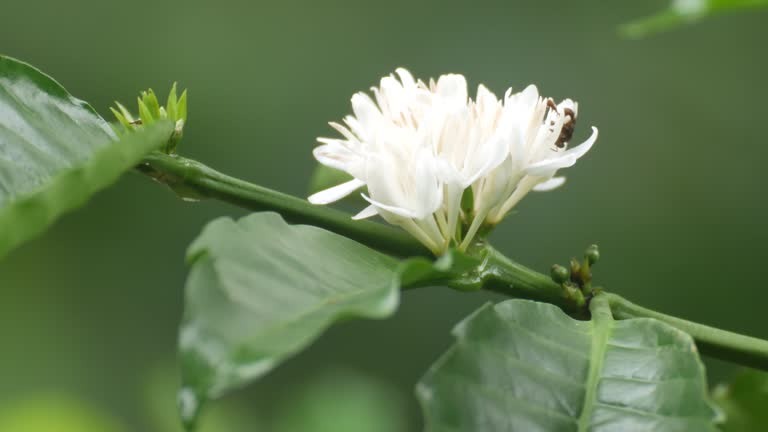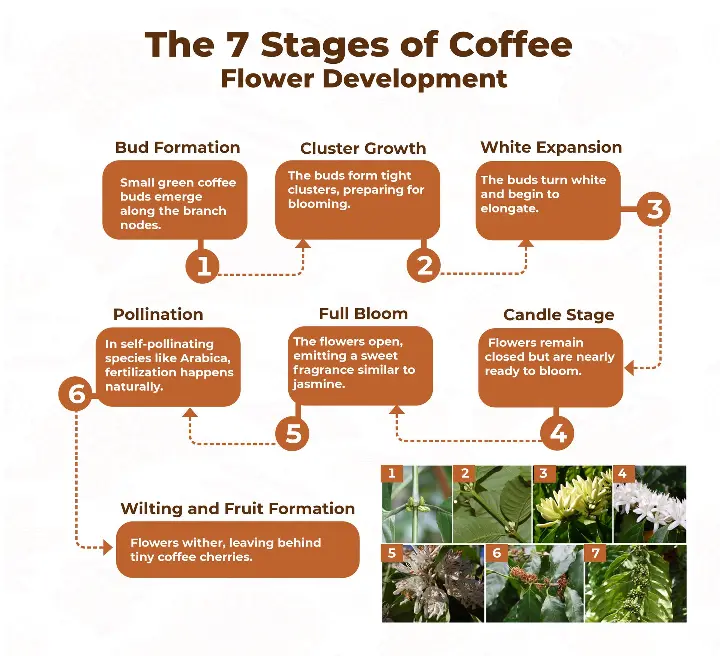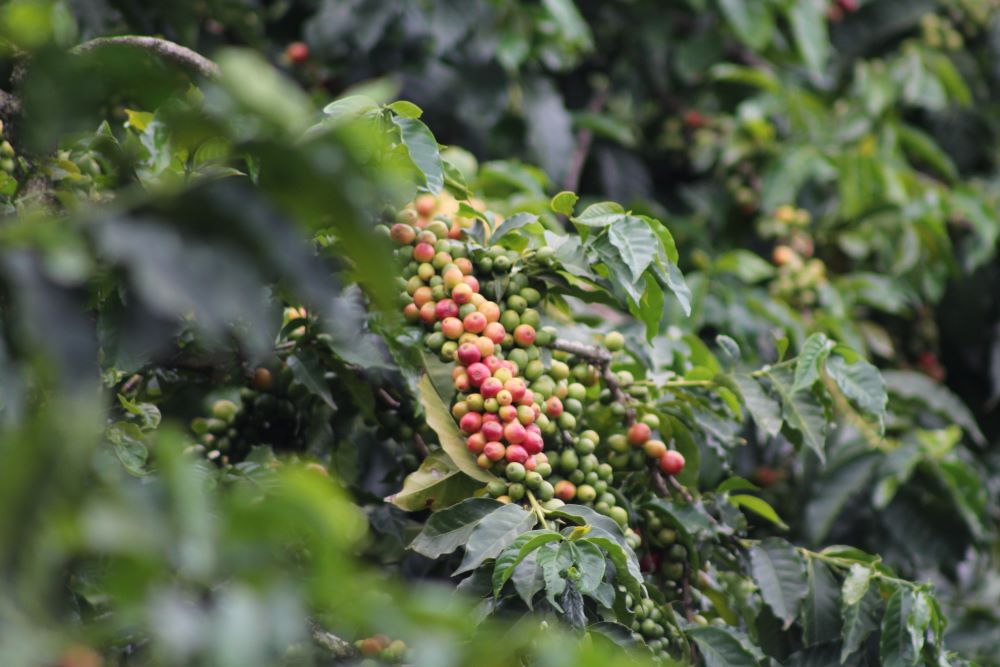Did you know that coffee flowers play an essential role in determining the quality and yield of coffee beans? Before those flavorful Kenyan coffee beans are in your cup, they start as delicate, jasmine-scented blooms. These small yet vital flowers mark the first step in a complex journey that ultimately determines your coffee's taste, aroma, and character.

How often do coffee plants flower?
Coffee flowering is a mesmerizing and delicate process that sets the stage for a successful coffee harvest. The flowering period varies depending on climate, altitude, and the coffee variety. Generally, it takes 3-4 years for a coffee plant to mature and bear fruit.
A well-maintained coffee plant can live for 20-30 years, though its most productive years are between 7 and 20 years.
Coffee plants typically flower once or twice a year, depending on the climate. In Kenya, where the weather follows a bimodal rainfall pattern, coffee flowering occurs in two cycles:
- Main flowering (March – April) happens after the long rainy season, leading to the primary coffee harvest from October to December.
- Secondary flowering (September – October) follows the short rainy season, resulting in a smaller harvest from June to August.
How Do Coffee Flowers Grow?
Coffee flowers develop in seven stages, each crucial for a healthy coffee crop. It all begins with forming small green buds along the branch nodes. These buds gradually grow into tight clusters, preparing for blooming. As they expand, they turn white and elongate, reaching what is known as the candle stage, where the flowers remain closed but are nearly ready to bloom. Once in full bloom, the coffee flowers open up, releasing a sweet fragrance reminiscent of jasmine.
For self-pollinating species like Arabica, pollination occurs naturally at this stage. As the flowers wither, tiny coffee cherries form, marking the beginning of the next phase of coffee production.

How Long Does Coffee Take After Flowering?
After flowering, coffee cherries take about 6-9 months to ripen, depending on the variety and bean belt conditions. Kenyan coffee, grown at high altitudes, often takes longer, allowing for slower cherry development and more complex flavors.
Once the flowers wither, small green cherries appear and gradually turn red when ripe. The quality of the coffee depends on the flowering stage, as poor flowering can lead to lower yields.
Every coffee flowering stage impacts the final taste, from the fragrant white blossoms to the rich, ripe cherries. Kenyan coffee, nurtured in fertile soils and high-altitude farms like Solai Coffee Farms, produces some of the world's most sought-after beans.
As you sip your coffee, take a moment to appreciate the journey it took from flower to cup and the hands that made it possible.
Experience the exceptional taste of Kenyan coffee! Visit the store now

Coffee Plant Flowering